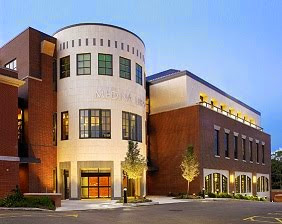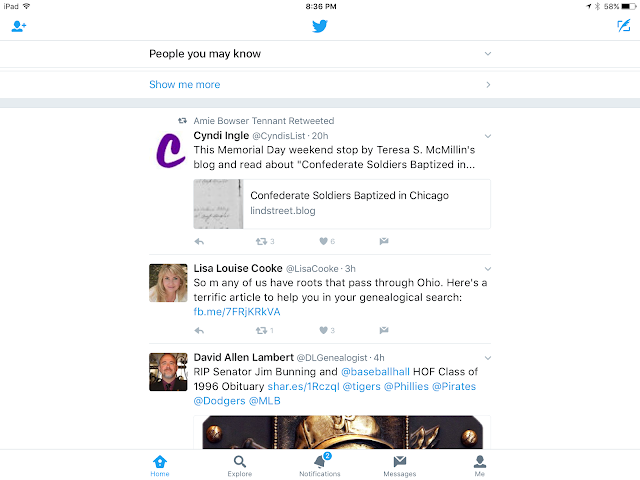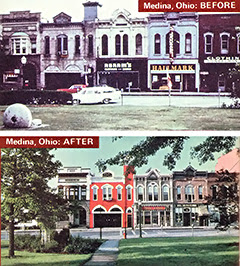 |
| Amie Bowswer Tennant |
About a month ago at the Ohio Genealogical Society annual conference, Amie Bowser Tennant talked about using Social Media & Genealogy.
She is a very dynamic speaker and she inspired me to explore all the ways that social media can benefit genealogy research.

Immediately, I joined several new groups on Facebook, including one for a surname group for a family name that I have researched thoroughly. I have been in contact with new cousins and we have been exchanging LOTS of photos of our common ancestors. Several of my new-found cousins want a copy of the book I wrote on the family.
She also recommended joining the groups for all the localities you are researching and for any genealogy software or websites. I already belonged to the groups in the areas where my ancestors lived and have found them interesting.
More tentatively, I joined Twitter. Twitter never appealed to me before. It seems geared towards news junkies and people who want to share every thought they have with the world.
But my eyes have been opened!
Twitter limits your "tweets" to 140 characters, so you have to be concise. Most often, tweets include a link to a web site or to a blog post. Often they include pictures. Amie recommended "following" genealogists that you admire or who lecture.
The ones I follow are:
Amie Bowser Tennant
Judy Russell (aka The Legal Genealogist)
Amy Johnson Crow
Joshua Taylor (from the Genealogy RoadShow and current president of the New York Genealogical & Biographical Society)
Lisa Louise Cooke (blogger and podcaster)
Medina County District Library (of course!)
David Allen Lambert
Here are some recent screen shots from my Twitter feed:
I purchased Amy Johnson Crow's book 31 Days to Better Genealogy and am making my way through it. It is only available as a Kindle book. Maybe that will be a topic for a future post.
Notice how all the tweets have hashtags # in them? The # symbol combines with a descriptive word and that becomes a "thread" that people can follow and contribute to. It is also used for searching Twitter.
The @ symbol combined with a name, is your "handle" or how you are identified on Twitter.
The links to web sites, or more often, to blog posts, have been shortened at sites like Bitly so they will fit within the 140 character limitations.
Joining Twitter has exposed me to all sorts of genealogical data that I might not have seen otherwise. And by seeing who your favorite genealogist follows, you learn about other important genealogists that you might never have heard of before.
Example:
David Allen Lambert. I decided to follow him because Judy Russell follows him. I had NO IDEA who he was. But he has very interesting tweets, like the one that led me to this article on Viking incursions into western Britain from Ancient Origins. Fascinating stuff!
 |
| David Allen Lambert |
I am sure there are other great features that will be discovered over the next weeks and months. And there is still Pinterest and Instagram to explore.
Meantime, why not try Twitter for yourself? Or please share your experiences with it in the comments below.
Oh, and if you would like to follow me, my handle is @KathJean55. You can join my other two followers!


























